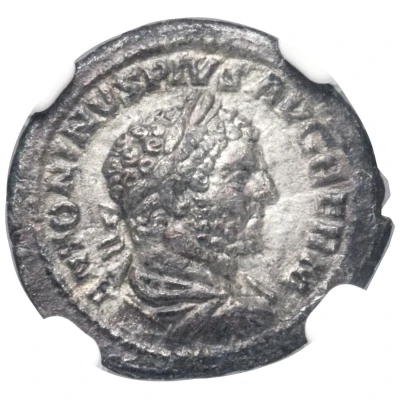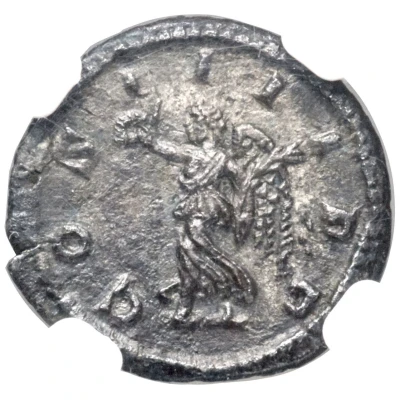Quinarius - Caracalla COS IIII P P; Victory
| Silver | - | - |
| Issuer | Rome › Roman Empire (27 BC - 395 AD) |
|---|---|
| Emperor | Caracalla (Marcus Aurelius Antoninus Caracalla) (198-217) |
| Type | Standard circulation coin |
| Years | 213-217 |
| Value | Silver Quinarius = ½ Denarius |
| Currency | Denarius, Reform of Augustus (27 BC – AD 215) |
| Composition | Silver |
| Shape | Round (irregular) |
| Technique | Hammered |
| Demonetized | Yes |
| Updated | 2024-10-06 |
| Numista | N#273553 |
|---|---|
| Rarity index | 100% |
Reverse
Victory, winged, draped, advancing left, holding wreath in extended right hand and palm sloped over left shoulder in left hand.
Script: Latin
Lettering: COS IIII P P
Translation:
Consul Quartum, Pater Patriae.
Consul for the fourth time, father of the nation.
Comment
Source:Online Coins of the Roman Empire (OCRE)
Interesting fact
The Quinarius was a denomination of Roman currency that was introduced during the reign of Emperor Caracalla in the early 3rd century AD. The coin was made of silver and had a value of one- fifth of a denarius, which was the standard unit of currency at the time. The Quinarius featuring Caracalla's image and the symbol of Victory on the reverse was minted between 213 and 217 AD and was widely used throughout the Roman Empire. It's interesting to note that the Quinarius coin was introduced as a response to the economic challenges faced by the Roman Empire during Caracalla's reign. The empire was facing inflation, debasement of the currency, and a decline in trade, and the introduction of the Quinarius was an attempt to address these issues by introducing a new denomination that would help stabilize the economy. Overall, the Quinarius - Caracalla (COS IIII P P; Victory) coin is an interesting piece of history that provides insight into the economic and political climate of the Roman Empire during the 3rd century AD.

